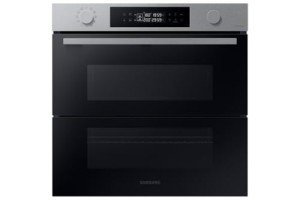The Comprehensive Guide to Built-In Ovens: Maximizing Kitchen Efficiency and Style
Built-in ovens are a vital function in contemporary kitchens, combining functionality with sleek design. They supply a seamless appearance, improve space efficiency, and frequently included sophisticated features that raise the cooking experience. This article will dig into the different types of built-in ovens, their advantages, essential considerations throughout purchase, and upkeep suggestions.
What is a Built-In Oven?
A built-in oven is created to be housed within cabinetry, using an integrated look that saves counter space and enhances the visual appeals of a kitchen. Unlike freestanding ovens, built-ins supply flexibility in terms of positioning and can be selected to match the kitchen's style.
Types of Built-In Ovens
There are a number of kinds of built-in ovens, each accommodating different cooking needs:
| Type | Description | Perfect Use |
|---|---|---|
| Single Oven | A basic oven with one cooking compartment. | Daily cooking, baking. |
| Double Oven | Two different oven compartments, permitting multi-tasking. | Large meals, multi-course cooking. |
| Wall Oven | Set up at eye level, normally with innovative functions. | Space-saving designs, ergonomic cooking. |
| Stove | Functions a fan to circulate hot air, cooking food equally. | Roasting, baking, and more. |
| Steam Oven | Utilizes steam for cooking, retaining wetness and nutrients. | Healthy cooking, baking bread. |
| Microwave | Combines microwave and regular oven functions. | Quick meals, reheating. |
Benefits of Built-In Ovens
Built-in ovens offer many benefits, which makes them a popular choice among property owners. Some crucial advantages include:
- Aesthetic Appeal: They can fit effortlessly into kitchen cabinets, developing a sophisticated and consistent look.
- Area Efficiency: By utilizing vertical area, they help maximize kitchen utility, especially in smaller locations.
- Advanced Features: Many come equipped with clever innovation, self-cleaning choices, and precision cooking functions.
- Enhanced Accessibility: Wall ovens can be placed at eye level, reducing the need for bending and making it much easier to keep an eye on cooking progress.
- Adjustable Options: Built-in alternatives been available in numerous sizes, finishes, and styles, allowing customized kitchen style.
Considerations When Choosing a Built-In Oven
When picking a built-in oven, there are several elements to think about to ensure that the device lines up with the user's cooking preferences and kitchen layout:
- Size and Capacity: Measure the setup area to make sure the chosen oven fits. Consider the oven capacity based upon cooking needs.
- Kind of Cooking: Think about the preferred cooking methods-- do you bake, roast, steam, or cook quickly? This will identify the kind of oven to choose.
- Functions: Evaluate clever features, temperature level probes, multiple cooking modes, and cleaning options.
- Energy Efficiency: Look for energy ratings to save money on utility bills, specifically if the oven will be used often.
- Budget: Built-in ovens can differ substantially in rate, so it's vital to establish a budget and think about long-term financial investment options.
Maintenance Tips for Built-In Ovens
To lengthen the life of a built-in oven and keep its efficiency, routine maintenance is important. Here are some useful suggestions:
- Cleaning: Regularly clean down the exterior and interior surfaces. Use specialized cleaners for stainless steel finishes.
- Self-Cleaning: Utilize the self-cleaning function occasionally to keep the interior pristine; however, prevent regular use to avoid wear and tear.
- Examine Seals: Inspect the door seals for any damage to prevent heat loss.
- Use Safe Cookware: Ensure that baking sheets and pans work with the particular kind of oven to avoid damage.
- Regular Inspection: Schedule expert upkeep checks at least once a year to guarantee everything functions smoothly.
Frequently Asked Questions About Built-In Ovens
Q1: How do I select the ideal size built-in oven for my kitchen?A: Measure
the assigned space for the oven and think about the total capability you need based upon your cooking practices.
Q2: Are built-in ovens simple to install?A: Installation can be complicated and typically requires professional support, particularly for electrical and gas connections. Q3: How often need to I clean my built-in oven?A: It's a good idea to clean the oven regular monthly and utilize the self-clean function regularly based on use frequency. built in electric oven and hob package : Will a built-in oven increase the worth of my home?A: Yes, a top quality built-in oven can enhance the kitchen's appeal, potentially increasing home value. Q5: Can built-in ovens
be used for all types of cooking?A: Most built-in ovens can manage a variety of cooking approaches, however specialized types, like steam or convection ovens, stand out in specific locations. Built-in ovens are an excellent addition to modern kitchen areas, mixing performance with style. With their multiple types, benefits, and customizable options, they cater to diverse culinary
needs while boosting general kitchen style. By considering size, type, features, and upkeep, property owners can choose a built-in oven that serves their cooking design and lifestyle efficiently. Purchasing a built-in oven not only elevates kitchen looks however likewise changes the cooking experience, making meal preparation more enjoyable and effective.

